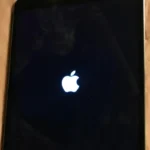Is your MacBook keyboard giving you trouble? Few things are as frustrating as trying to type an important email or document only to discover some keys won’t respond. This common problem has several potential fixes you can try before heading to an Apple store. Most keyboard issues can be fixed by cleaning under the keys, checking your settings, or resetting your computer’s SMC and PRAM.
When keys stop working on your MacBook, the culprit is often dust or crumbs trapped underneath. You might notice certain keys feel different or don’t click properly, like a return key that feels softer than others. Simple solutions include turning your MacBook upside down and gently tapping it or checking that the correct keyboard layout is selected in your system settings.
Fix MacBook Keys Not Working: Step-by-Step Troubleshooting Guide for Apple Users
When keys on your MacBook stop responding, it can seriously impact productivity—whether it’s one stubborn key or the entire keyboard acting up. Below is a comprehensive troubleshooting guide to help you diagnose and fix MacBook keyboard problems quickly and effectively.
1. Determine the Scope of the Problem
Start by identifying what’s actually not working:
- Is it only specific keys (like Shift, Space, or Command)?
- Is it entire rows or columns of keys?
- Is no key responding at all?
Understanding the scope helps narrow down whether the issue is hardware, software, or both.
2. Clean the Keyboard Carefully
Dust and debris can block keystrokes—especially on older MacBook models with butterfly or scissor mechanisms.
How to clean your keyboard:
- Turn off your MacBook and unplug it.
- Hold the MacBook at a 75-degree angle (nearly vertical).
- Use compressed air in short bursts, spraying in a zigzag pattern across the keys.
- Rotate the MacBook and repeat for each side.
Avoid using liquid cleaners or prying off keys, as this can damage the keyboard.
3. Restart Your Mac
Simple but effective—rebooting clears temporary system glitches.
- Click the Apple menu > Restart.
- After the reboot, check if the keys work normally.
4. Check for Software Updates
Sometimes keyboard issues are related to macOS bugs.
- Go to System Settings > General > Software Update.
- Install any available updates.
- Restart after the update and test your keyboard again.
5. Reset the System Management Controller (SMC)
The SMC controls low-level hardware functions, including the keyboard.
For Intel-based Macs:
- Shut down the Mac.
- Press and hold Shift + Control + Option + Power button for 10 seconds.
- Release all keys, then press the Power button to turn on your Mac.
Apple Silicon Macs reset SMC automatically during reboot.
6. Boot in Safe Mode
Safe Mode helps you test whether the issue is caused by third-party apps or extensions.
Apple Silicon Macs:
- Shut down your Mac.
- Press and hold the power button until startup options appear.
- Select your startup disk, hold Shift, and click Continue in Safe Mode.
Intel Macs:
- Restart and hold Shift until you see the login screen.
Test your keyboard in Safe Mode. If it works, third-party software might be the cause.
7. Check Keyboard Settings
Misconfigured settings could be interfering with your keys.
- Go to System Settings > Keyboard.
- Ensure that:
- Key Repeat and Delay Until Repeat are not set to extreme values.
- Modifier Keys are correctly assigned.
- If you use Third-party apps like Karabiner or BetterTouchTool, try disabling them.
8. Test in a New User Account
Corrupt user preferences can affect input.
- Go to System Settings > Users & Groups.
- Create a new standard user.
- Log in and check if the keyboard works properly in the new profile.
If it does, the issue likely lies within your main account’s configuration.
9. Use Apple Diagnostics to Check Hardware
- Shut down your Mac.
- Turn it on and hold D immediately until diagnostics start.
- Follow the prompts and note any error codes related to the keyboard.
10. Use an External Keyboard as a Temporary Fix
If you’re in a bind, plug in a USB or Bluetooth keyboard until your internal one is fixed.
11. Contact Apple Support for Service
Some MacBook models—especially those with butterfly keyboards (2015–2019)—are prone to hardware failure. Apple offers free keyboard service programs for eligible devices.
Visit Apple’s support site to check your MacBook’s serial number and eligibility. If your device qualifies, Apple will repair or replace the keyboard at no charge.
Most keyboard issues on MacBooks boil down to either minor software bugs or specific hardware defects. Start with basic troubleshooting like cleaning and settings checks before diving into resets or diagnostics. And if you’re dealing with a butterfly keyboard, know that you’re not alone—and there may already be a free fix waiting for you.
Key Takeaways
- Clean under keys by turning your MacBook upside down and gently tapping to remove dust and debris.
- Check keyboard settings to ensure the correct layout is selected and accessibility options like Mouse Keys are turned off.
- Reset your MacBook’s SMC and PRAM if keyboard problems persist after trying basic fixes.
Determining the Cause of Key Failure
When your MacBook keys stop working, finding the root cause is the first critical step toward fixing the problem. Both software glitches and hardware damage can prevent keys from responding properly.
Identifying Software Issues
Software problems often cause keyboard malfunctions on MacBooks. Start by checking if the issue appears in all applications or just one program. If it’s limited to a single app, the problem likely lies with that software.
Keyboard testing websites can help confirm which keys aren’t working. Simply visit the site and press each key to see if it registers.
System updates sometimes conflict with keyboard functionality. Check if the problem started after a recent macOS update. You can test this by:
- Restarting your Mac
- Booting in Safe Mode (hold Shift during startup)
- Testing the keyboard again
Third-party keyboard utilities might also interfere with normal operation. Try temporarily disabling these programs to see if your keyboard returns to normal.
Remapping keys through system preferences or third-party tools can work as a temporary fix for software-related key problems.
Recognizing Hardware Complications
Physical damage is a common cause of keyboard failure. Inspect your keyboard for visible signs of damage, dirt, or debris. Even tiny food crumbs can prevent keys from working properly.
Liquid spills are especially harmful to MacBook keyboards. If you’ve recently spilled something, this is likely the culprit. Look for:
- Sticky keys
- Multiple adjacent keys failing
- Keys that work intermittently
Some keys need to be pressed longer to register. Function keys and special buttons often have a built-in delay to prevent accidental activation.
Battery swelling can also cause keyboard issues in older MacBooks. If your trackpad feels tight or the bottom case bulges, the swollen battery might be pressing against the keyboard.
For butterfly keyboard models (2015-2019), dust and debris are especially problematic. These models are known for keyboard failure and might need professional service.
Immediate Steps for Troubleshooting
When your MacBook keys stop working, quick action can often solve the problem without needing professional repair. These basic steps address the most common causes of keyboard issues and can get you typing again in minutes.
Basic Keyboard Cleaning
Dirt and debris are common culprits when MacBook keys stop working. Even tiny particles can get trapped under keys and block them from registering properly.
First, turn off your MacBook completely before cleaning. This prevents accidental keypresses while cleaning.
Hold your MacBook at a 75-degree angle and use compressed air to blow under and around the keys. Spray in a zigzag pattern, moving from left to right.
For sticky keys, dampen a cotton swab with isopropyl alcohol (70%) and gently clean around key edges. Be careful not to let liquid drip under keys.
For newer MacBooks with butterfly or Magic keyboards, use a soft brush to remove visible debris from between keys. Be gentle to avoid damaging delicate key mechanisms.
Resetting the System Management Controller (SMC)
When cleaning doesn’t work, resetting the SMC often fixes keyboard issues. The SMC controls many hardware functions including keyboard operation.
For MacBooks with non-removable batteries (most models after 2009):
- Shut down your MacBook completely
- Connect the power adapter
- Press and hold Shift + Control + Option + Power button simultaneously for 10 seconds
- Release all keys at once
- Press the power button to turn on your Mac
For MacBooks with Apple Silicon (M1, M2 chips):
- Shut down your Mac
- Wait 30 seconds
- Restart normally
After the reset, test your keyboard to see if all keys work properly. This process often fixes unresponsive keys caused by system management issues.
Updating macOS Software
Outdated software can cause keyboard problems. Apple regularly releases updates that fix bugs affecting keyboard functionality.
Check for updates by clicking the Apple menu in the top-left corner and selecting “System Preferences” or “System Settings.” Click on “Software Update” and wait for your Mac to check for updates.
If updates are available, click “Update Now” or “Upgrade Now.” Make sure your MacBook is connected to power during the update process to prevent interruptions.
Some keyboard issues are fixed by updating specific apps rather than the whole system. If keys work in some apps but not others, check for updates to those problematic applications.
After updating, restart your MacBook and test the keyboard again. Software updates often include keyboard firmware fixes that can resolve unresponsive keys.
Adjusting Keyboard Settings
Sometimes your MacBook keyboard problems can be solved by tweaking system settings. These adjustments can fix issues like the shift key not working or keys responding too slowly.
Modifying Accessibility Options
The first place to check when keyboard keys aren’t working properly is your Mac’s Accessibility settings. To access these settings:
- Click the Apple icon in the top left corner of your screen
- Select System Preferences (or System Settings in newer macOS versions)
- Click on Accessibility
- Select Keyboard under Motor options
Several settings here could be causing your keyboard issues. The Sticky Keys feature lets you press modifier keys (like Shift, Command, or Option) one at a time rather than simultaneously. This might be helpful for some users but confusing if enabled accidentally.
Another setting to check is Slow Keys. When turned on, this feature adds a delay between when you press a key and when it registers. If this is enabled, your keyboard might seem unresponsive.
Resetting Keyboard Settings
If adjusting accessibility options doesn’t fix your keyboard, try resetting your keyboard settings. For some issues, a simple keyboard reset can work wonders.
For Magic Keyboard users experiencing problems, try holding down the Option key for a few seconds. This turns off “mouse buttons” mode which can cause certain keys to behave differently.
For persistent issues, reset your Mac’s keyboard settings by:
- Go to System Preferences > Keyboard
- Click on the Input Sources tab
- Remove any keyboard layouts you don’t use
- Restart your Mac to apply changes
If you’re using a MacBook with a butterfly keyboard (2015-2019 models), check for debris under the keys. You can hold your MacBook upside down with the lid open and gently tap the base to dislodge any particles stuck underneath.
Connecting External Devices
When your MacBook keyboard isn’t working, using external input devices can get you back to work quickly. This solution works for both temporary fixes and long-term alternatives while waiting for repairs.
Troubleshooting USB Connection Issues
If your USB keyboard doesn’t work with your MacBook, try these steps:
- Check different USB ports – Test all available ports on your MacBook.
- Try another device – Connect another USB device to verify the port works.
- Restart your Mac – Sometimes a simple restart fixes connection issues.
- Check for debris – Make sure nothing blocks the USB ports.
For persistent problems, try resetting the SMC (System Management Controller). This often fixes power-related issues affecting USB ports.
Don’t forget to check if your USB keyboard needs drivers. Most work without them, but some gaming or specialized keyboards require software installation.
Resolving Bluetooth Connection Problems
Bluetooth keyboards offer a wire-free solution when your MacBook keyboard fails. Here’s how to solve common connection problems:
- Turn Bluetooth off and on – Go to System Preferences > Bluetooth, toggle off then on.
- Remove and re-pair the device – Delete the keyboard from paired devices, then set it up again.
- Check battery levels – Low batteries cause unreliable connections.
If problems continue, try these steps:
- Reset Bluetooth module – Hold Shift+Option and click the Bluetooth menu bar icon, select “Reset the Bluetooth module”
- Update macOS – Outdated software can cause connection issues
- Move away from interference – Wi-Fi routers and other electronics can disrupt Bluetooth signals
For frequent Bluetooth problems, keeping a backup USB keyboard handy ensures you’re never locked out of your computer.
Software Recovery and Data Management
When MacBook keys fail, software issues can be just as problematic as hardware ones. Recovery tools can help you save important data and fix keyboard response problems without resorting to expensive repairs.
Utilizing Data Recovery Software
If your MacBook keyboard stops working, you might worry about losing data if you can’t type commands. Data recovery software can help save your files even when normal access is limited.
Programs like EaseUS Data Recovery Wizard offer user-friendly interfaces that work even with limited keyboard function. These tools can scan your Mac for lost or inaccessible files.
To use recovery software when keys aren’t working:
- Connect an external keyboard if possible
- Use the on-screen keyboard to navigate
- Back up important files to an external drive first
Many recovery programs allow mouse-only operation, making them useful when keyboard input is limited or unavailable.
Addressing Issues with Third-party Software
Sometimes third-party software conflicts with your MacBook’s keyboard drivers. Microsoft Office and other productivity apps may occasionally cause keyboard response issues.
To fix keyboard problems related to software:
- Restart your Mac in Recovery Mode (Command+R during startup)
- Check if keyboard works in Recovery Mode
- If it works there, a software issue is likely the cause
Try resetting the System Management Controller (SMC), which often fixes keyboard response problems. This simple step restores proper communication between hardware and software.
For persistent issues, remove recently installed applications one by one to identify which might be causing the conflict. After finding the problematic software, check for updates or contact the developer for support.
Specialist Services and Repair Options
When simple fixes don’t work, professional repair options can save your MacBook keyboard. These services range from free programs to paid expert repairs.
Apple’s Keyboard Service Program
Apple offers a Keyboard Service Program for specific MacBook models with butterfly keyboards. This program covers eligible laptops for 4 years after purchase, even if your warranty has expired.
The program fixes issues like:
- Keys that repeat unexpectedly
- Letters or characters that don’t appear
- Keys that feel “sticky” or don’t respond
To check eligibility, users should visit Apple’s website and enter their MacBook’s serial number. The repair process typically takes 3-5 business days.
Before sending the laptop for repair, back up all data. Apple’s service may involve replacing the entire top case assembly, which includes the keyboard, battery, and trackpad.
Consulting an Authorized Repair Center
When your MacBook isn’t covered by Apple’s program, authorized repair centers offer trusted solutions. These centers employ Apple-certified technicians who use genuine parts.
Repair costs vary based on:
- MacBook model
- Extent of keyboard damage
- Whether individual keys or the entire keyboard needs replacement
Most centers provide free diagnostics and cost estimates before starting work. Some also offer temporary loaner computers during repairs.
Third-party repair shops may charge less, but using non-Apple parts could affect keyboard performance. They may also void any remaining warranty on the laptop.
For complex issues, some centers offer mail-in services with shipping materials and tracking.
Avoiding Future Issues
Taking care of your MacBook keyboard can prevent many common problems. Regular maintenance helps extend the life of your keys and keeps them working properly.
Clean regularly – Use compressed air to blow out dust and crumbs from between keys. Gently wipe the keyboard surface with a soft, lint-free cloth. Avoid liquid cleaners directly on keys.
Wash your hands before using your MacBook. Oils, food particles, and dirt from fingers can damage the keyboard over time.
Use a keyboard cover when not typing. This simple barrier keeps dust, liquids, and food particles away from the sensitive mechanisms underneath.
Keep food and drinks away from your MacBook. Even small spills can cause major problems with keyboard function.
Update your software regularly. Apple often releases fixes for keyboard issues in their software updates.
Check keyboard settings occasionally to make sure nothing has changed. Features like Slow Keys might accidentally get turned on.
Be gentle when typing. Pounding on keys can damage the mechanisms underneath. A light touch is all that’s needed.
Rest your MacBook on flat, stable surfaces while typing. Using it on soft surfaces like beds can trap heat and put pressure on internal components.
Consider a professional cleaning once a year. Apple stores and authorized repair centers can safely deep-clean your keyboard.
These simple habits can save you from frustrating keyboard problems and expensive repairs in the future.
Frequently Asked Questions
MacBook keyboard issues can be frustrating but often have simple solutions. Here are answers to common questions about fixing non-working keys.
What troubleshooting steps can be taken when a MacBook keyboard is not responding at the login screen?
When your MacBook keyboard won’t respond at the login screen, try connecting an external keyboard first to see if you can gain access. This helps determine if the issue is with the built-in keyboard or the system itself.
Restart your Mac in Safe Mode by holding the Shift key while turning it on. This basic troubleshooting step often resolves temporary software glitches affecting keyboard function.
If possible, reset the SMC (System Management Controller), which controls many hardware functions including keyboard operation. The reset process varies depending on your MacBook model.
How can I address an issue with specific keys on my MacBook Air that have ceased to function?
Clean the problematic keys first using compressed air at a 75-degree angle. Dirt and debris under keys are common culprits for non-functioning keys on a MacBook Air.
Check your keyboard settings by going to System Preferences > Keyboard. Make sure keyboard layout settings match your physical keyboard and that no key customizations are active.
For persistent issues with specific keys, visit an Apple Store where technicians can replace individual keys free of charge in many cases. This service is particularly useful for loose or damaged keys.
What are the potential reasons behind a MacBook Pro keyboard having non-functional keys?
Dirt and debris trapped under keys are the most common causes of keyboard problems. Even tiny particles can prevent keys from making proper contact.
Software issues like outdated macOS or conflicting applications can affect keyboard function. Running software updates often resolves these problems.
Hardware damage from wear and tear or liquid exposure may cause keys to fail. Butterfly keyboards (2015-2019 models) are particularly prone to failure and may qualify for Apple’s keyboard service program.
The Slow Keys accessibility feature might be accidentally enabled, causing keys to seem unresponsive. This setting requires holding keys longer than normal to register.
How can one resolve keyboard functionality issues on a MacBook, excluding the power button?
Reset NVRAM/PRAM by restarting your Mac and immediately holding Option+Command+P+R for about 20 seconds. This can fix various hardware-related issues including keyboard problems.
Check for problematic applications by opening Activity Monitor and looking for high CPU usage. Some apps may interfere with keyboard function when running in the background.
Try disabling Slow Keys and Sticky Keys in System Preferences > Accessibility > Keyboard. These features can make keys appear unresponsive when enabled.
Create a new user account to test if the keyboard works properly there. If it does, the issue may be with your user settings rather than the keyboard itself.
What steps should be taken if a MacBook keyboard becomes unresponsive after a liquid spill?
Immediately shut down your MacBook and disconnect the power source. Quick action is crucial to prevent electrical damage after liquid contact.
Turn the MacBook upside down in an inverted V shape to drain liquid away from internal components. Do not turn it on to check if it works.
Wait at least 48 hours for the MacBook to dry completely. Using fans (not heat) can help speed up the process, but patience is key.
Take your MacBook to an Apple service technician as soon as possible. They can properly clean internal components and assess damage, which may prevent more serious problems later.
Is there a procedure to reset MacBook keyboard keys when they stop typing letters?
For software-related issues, restart your Mac while holding the key longer during startup. Some keys have a built-in delay to prevent accidental activation.
Run Apple Diagnostics by restarting and holding the D key to check for hardware issues. This built-in tool can identify keyboard failures requiring professional repair.
Try resetting keyboard-related settings by deleting the keyboard preference file. Navigate to ~/Library/Preferences/ and look for files containing “keyboard” in the name, then move them to the trash and restart.
If all else fails, book a Genius Bar appointment through the Apple website. Technicians can provide hardware repairs or replacements for keyboard issues beyond simple fixes.







